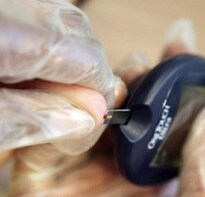Type 2 diabetes, linked in 90% of cases to overweight and obesity, is soaring. New research shows 40% of Americans and 50% of Hispanics and non-Hispanic black women will get the disease at some point in their life and the numbers are unlikely to be much different elsewhere in the developed world
How much worse can the type 2 diabetes epidemic get? Shockingly, a new study published by a leading medical journal says that 40% of the adult population of the USA is expected to be diagnosed with the disease at some point in their lifetime. And among Hispanic men and women and non-Hispanic black women, the chances are even higher - one in two appear to be destined to get type 2 diabetes.As Public Health England spelled out in a recent report urging local authorities to take action, 90% of people with type 2 diabetes are overweight or obese. There is no mystery behind the rise in diagnoses - they match the soaring weight of the population. The climb dates back to the 1980s and is associated with our more sedentary lifestyles and changing eating habits - more food, containing more calories, more often. It is those things that will have to be tackled if the epidemic is to be contained.The new study in The Lancet Diabetes & Endocrinology journal, from a team of researchers from the Centers for Disease Control and Prevention in Atlanta, shows that the risk of developing type 2 diabetes for the average 20 year-old American rose from 20% for men and 27% for women in 1985-1989, to 40% for men and 39% for women in 2000-2011. The study was big - involving data including interviews and death certificates from 600,000 Americans.Americans are generally living longer, which is a factor in their increased lifetime chance of developing type 2 diabetes. They are also not dying in the same proportions that they were, because of better treatment. However, that means they are going to spend far more years of their lives suffering from type 2 diabetes, which can lead to blindness and foot amputations as well as heart problems.
How much worse can the type 2 diabetes epidemic get? Shockingly, a new study published by a leading medical journal says that 40% of the adult population of the USA is expected to be diagnosed with the disease at some point in their lifetime. And among Hispanic men and women and non-Hispanic black women, the chances are even higher - one in two appear to be destined to get type 2 diabetes.As Public Health England spelled out in a recent report urging local authorities to take action, 90% of people with type 2 diabetes are overweight or obese. There is no mystery behind the rise in diagnoses - they match the soaring weight of the population. The climb dates back to the 1980s and is associated with our more sedentary lifestyles and changing eating habits - more food, containing more calories, more often. It is those things that will have to be tackled if the epidemic is to be contained.The new study in The Lancet Diabetes & Endocrinology journal, from a team of researchers from the Centers for Disease Control and Prevention in Atlanta, shows that the risk of developing type 2 diabetes for the average 20 year-old American rose from 20% for men and 27% for women in 1985-1989, to 40% for men and 39% for women in 2000-2011. The study was big - involving data including interviews and death certificates from 600,000 Americans.Americans are generally living longer, which is a factor in their increased lifetime chance of developing type 2 diabetes. They are also not dying in the same proportions that they were, because of better treatment. However, that means they are going to spend far more years of their lives suffering from type 2 diabetes, which can lead to blindness and foot amputations as well as heart problems.
Advertisement
As the number of diabetes cases continue to increase and patients live longer there will be a growing demand for health services and extensive costs. More effective lifestyle interventions are urgently needed to reduce the number of new cases in the USA and other developed nations.Both he and Canada-based Dr Lorraine Lipscombe, who has written a commentary on the study, point out that the situation in the US is unlikely to be much different from that elsewhere in the developed world. Dr Lipscombe, from Women's College Hospital and the University of Toronto, writes:
The trends reported by Gregg and colleagues are probably similar across the developed world, where large increases in diabetes prevalence in the past two decades have been reported.Primary prevention strategies are urgently needed. Excellent evidence has shown that diabetes can be prevented with lifestyle changes. However, provision of these interventions on an individual basis might not be sustainable. Only a population-based approach to prevention can address a problem of this magnitude. Prevention strategies should include optimisation of urban planning, food-marketing policies, and work and school environments that enable individuals to make healthier lifestyle choices. With an increased focus on interventions aimed at children and their families, there might still be time to change the fate of our future generations by lowering their risk of type 2 diabetes.A patient undergoes a blood test for diabetes, a condition which brings icnreased risk of stroke and heart failure. Photograph: Hugo Philpott/PAAdvertisement
Advertisement
For the latest food news, health tips and recipes, like us on Facebook or follow us on Twitter and YouTube.
Advertisement
